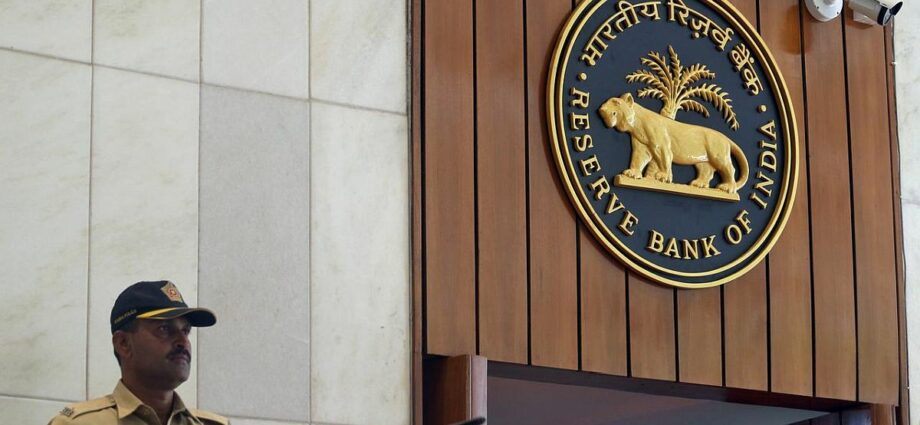Exactly a fortnight ahead of the Reserve Bank of India’s (RBI’s) next monetary policy review, a key market indicator of interest rates — the overnight indexed swap (OIS) — suggests that the central bank may tighten policy by 35 basis points and then refrain from further rate hikes.
RBI Deputy Governor Michael Patra recently described the OIS as the primary instrument for hedging interest rate risk in India.
The six-member Monetary Policy Committee (MPC) of the RBI will meet on December 5-7.
Overnight indexed swaps, which are derivative products, were initially developed as a tool for investors to hedge their interest rate exposure to sovereign bonds.
Over time, the market evolved into one that, to a great extent, involves taking a bet on the future direction of interest rates.
When OIS rates fall, market participants express expectations of easier financial conditions.
A rise in swap rates typically points towards tighter financial conditions and rate hikes.
From October 14 to November 21, two of the most active OIS contracts – the one-year swap rate and the five-year swap rate have declined by 40 basis points and 50 basis points, respectively, Bloomberg data showed.
The fall in swaps was brought about by softer inflation prints in India and the US.
“At present, the OIS pricing is showing a 35-basis point rate hike by the RBI in December.
“The current pricing is because of the latest inflation data, both in the US and India.
“Traders now feel that on the domestic front, we are somewhere close to the peak on the repo rate,” said Naveen Singh, head of trading at ICICI Securities Primary Dealership.
While this recent plunge does not mean that the market expects the RBI to immediately start cutting interest rates, it shows expectations of the central bank calling an end to its current tightening cycle, traders said.
So far in 2022, the RBI has hiked the repo rate by a cumulative 190 basis points to 5.90 per cent, in order to tackle elevated inflation.
“If you see the one-cross-one forward rate (the relevant one-year forward rate), it is at 6.40 per cent, which tells us that the RBI won’t hike rates beyond 6.25 per cent.
“The 15 bps above that is the funding cost premium.
“So, the curve is telling us that after a 35-basis point hike, the RBI will take a long pause,” Singh said.
The expectation of the RBI’s rate hike cycle ending after December is further elucidated by a rare occurrence — an inversion in the swap curve.
This implies that the market expects concerns of slowing economic growth to play out over a more-than-one-year time frame, which would make a case for the RBI to opt for a looser monetary policy.
At present, two-year swap rates and five-year swap rates are sharply lower than the one-year swap.
On Tuesday the one-year swap rate closed at 6.70 per cent, while the two-year and five-year swaps closed at 6.45 and 6.43 per cent, respectively, Clearing Corporation data showed.
Under usual circumstances, rates on longer-term debt instruments are higher than those on short-term instruments in order to compensate for uncertainty regarding inflation and growth dynamics over a larger time frame.
This also generally holds true for yields on government bonds.
“Now, I think there is a consensus of a 35-basis point rate hike in December with a lot of people talking about a change in stance to neutral,” said Vikas Goel, PNB Gilts MD & CEO.
“The inversion is our way of pointing to growth slowing down a lot. If you look at the one-year swap over the two-year swap, the inversion is quite sharp.
“They (RBI) might start reducing rates fairly quickly.
“That is what the OIS market is telling me right now,” he said.
Goyal added the caveat that the OIS market is often heavily influenced by overseas factors and as such was not a watertight indicator of domestic rate expectations.
Source: Read Full Article
-
U.S. Job Growth Far Exceeds Expectations In January, Unemployment Rate Drops To 53-Year Low
-
Indian crypto exchanges stay put in business after ‘a year to forget’
-
Rod Stewart Cancels Aussie Date At Last Minute, Cites Health Problem In Apology
-
Food Safety Company Employed More Than 100 Children, Labor Officials Say
-
Who Can Dethrone The US Dollar?


